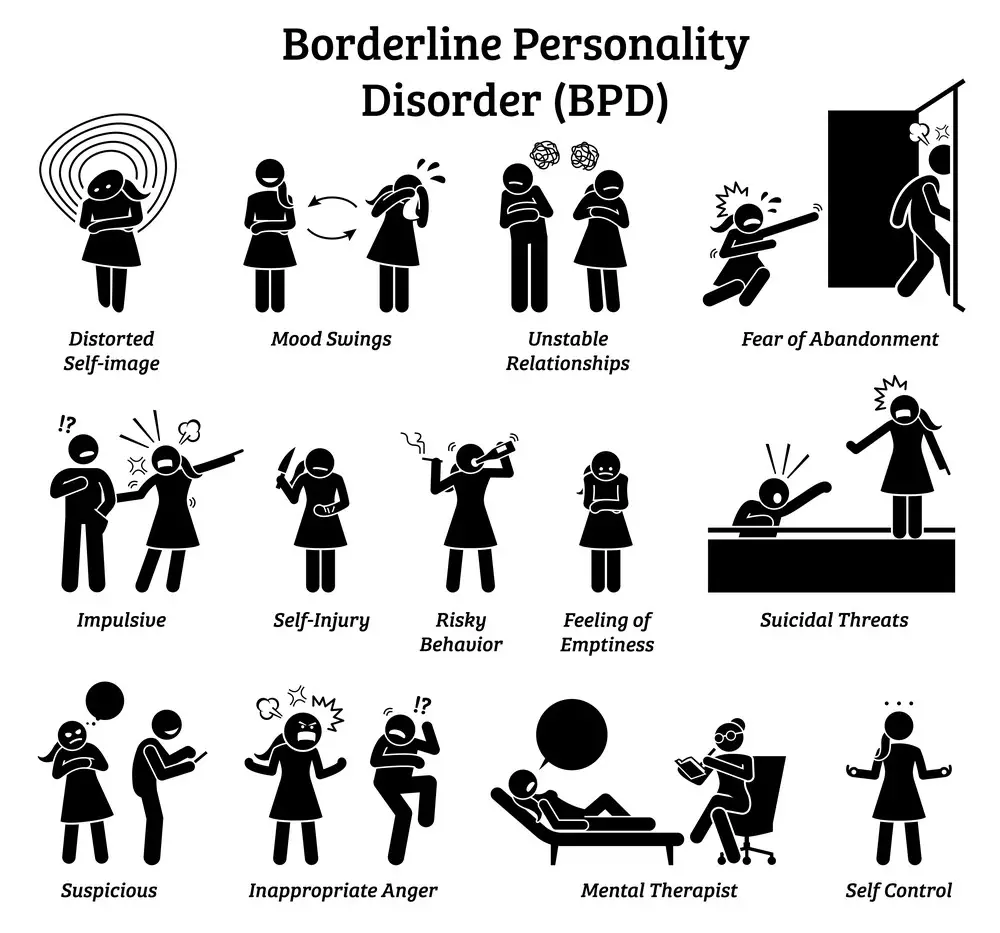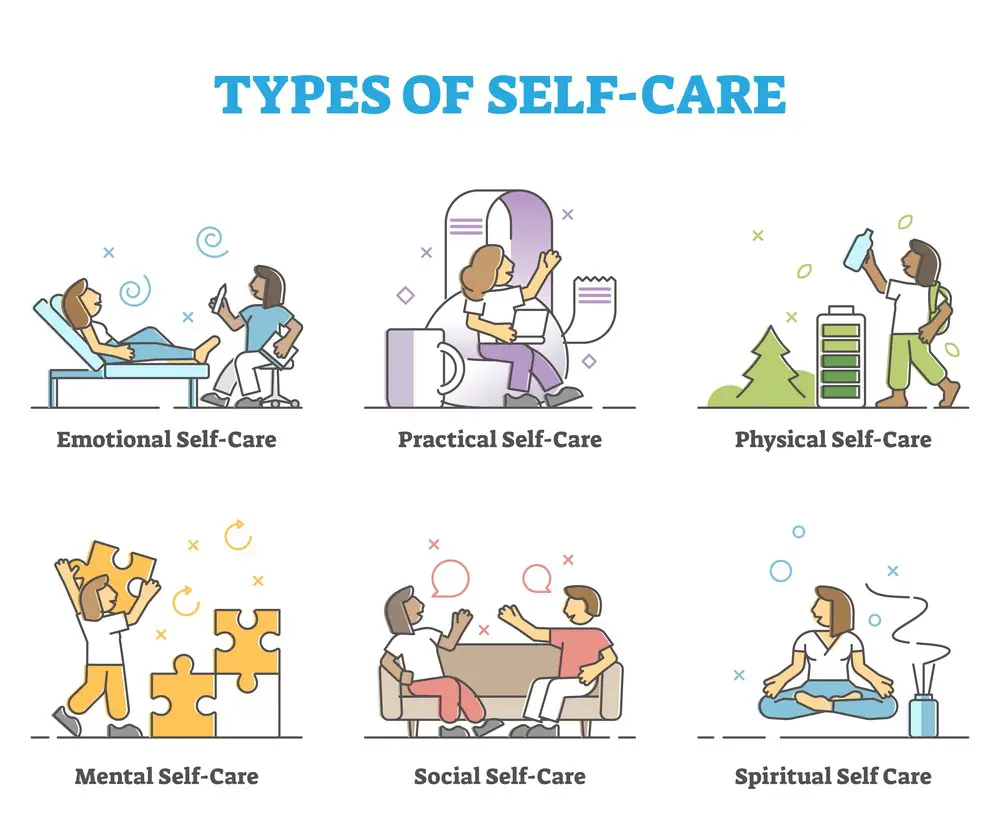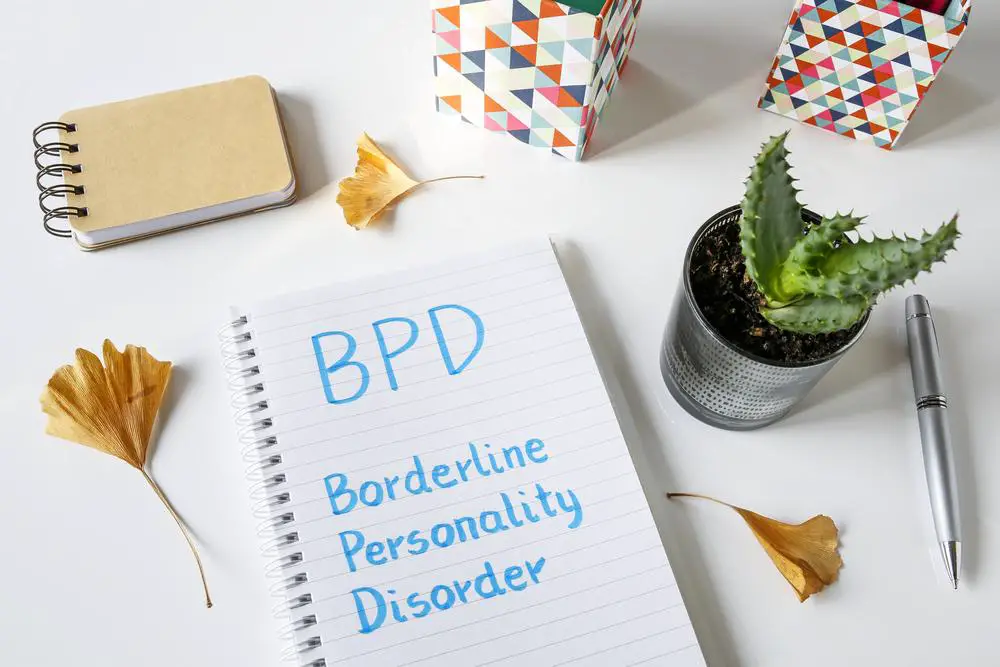As a BetterHelp affiliate, we receive compensation from BetterHelp if you purchase products or services through the links provided
Borderline Personality Disorder (BPD) is a complex and often misunderstood mental health condition that affects millions of people worldwide. BPD is characterized by intense and unstable emotions, impulsive behavior, and difficulties in relationships. While the condition is treatable, it can be challenging to diagnose and manage, making it essential to raise awareness and promote understanding of BPD.
May is BPD Awareness Month, a time to educate the public about the condition and reduce the stigma associated with it. During this month, organizations and individuals come together to share information about BPD, its symptoms, and how to support those living with the condition. Through BPD Awareness Month, we can increase understanding and empathy for those who are affected by BPD and ultimately improve their quality of life.
Key Takeaways
- BPD Awareness Month occurs in May and is an opportunity to educate the public and reduce the stigma associated with the condition.
- BPD is a complex and often misunderstood mental health condition characterized by intense and unstable emotions, impulsive behavior, and difficulties in relationships.
- Through increased awareness and understanding, we can support and improve the lives of those living with BPD.

Understanding Borderline Personality Disorder
If you or someone you know has been diagnosed with Borderline Personality Disorder (BPD), it’s essential to understand the symptoms, causes, and diagnosis of this condition. BPD is a type of personality disorder that affects how a person thinks, feels, and behaves.
Definition and Symptoms
People with BPD experience intense emotions, have difficulty regulating their emotions and struggle to maintain stable relationships. They may also have a distorted sense of self-image, engage in impulsive behaviors, and experience chronic feelings of emptiness.
Some common symptoms of BPD include:
- Fear of abandonment
- Unstable relationships
- Impulsive behavior
- Emotional instability
- Chronic feelings of emptiness
- Intense anger or irritability
- Paranoia or dissociation
Causes and Diagnosis
The exact cause of BPD is unknown, but research suggests that a combination of genetic, environmental, and brain factors may contribute to its development. Trauma, abuse, neglect, and invalidation during childhood are also believed to increase the risk of developing BPD.
Diagnosing BPD can be challenging as many of its symptoms overlap with other mental health conditions. Mental health professionals typically use a diagnostic tool called the DSM-5 to diagnose BPD.
If you or someone you know is experiencing symptoms of BPD, it’s essential to seek professional help. Treatment options for BPD may include therapy, medication, and self-help strategies.
Key Takeaway
BPD is a type of personality disorder that affects how a person thinks, feels, and behaves. It can be challenging to diagnose, but seeking professional help is essential. Treatment options for BPD may include therapy, medication, and self-help strategies.
The Importance of BPD Awareness Month
As someone who may be affected by Borderline Personality Disorder (BPD), you understand how important it is to raise awareness about this condition. BPD Awareness Month (May) provides an opportunity for individuals, families, and communities to come together and learn more about BPD, its impact, and how to support those who are affected by it.
Goals and Significance
The main goal of BPD Awareness Month is to increase understanding and reduce the stigma associated with BPD. Education is a key component of this effort, as it helps to dispel myths and misconceptions about the condition. By increasing awareness, we can help to improve access to treatment and support for those who are affected by BPD.
BPD Awareness Month also serves as a reminder that individuals with BPD are not alone. It is estimated that 1.6% of adults in the United States have BPD, yet many people are still unaware of the condition or its impact. By raising awareness, we can help to create a more supportive and inclusive environment for individuals with BPD and their loved ones.
Events and Activities
During BPD Awareness Month, various events and activities promote education and awareness. These may include:
- Educational seminars and workshops
- Online webinars and support groups
- Fundraising events to support BPD research and advocacy
- Social media campaigns to raise awareness and reduce stigma
Participating in these events and activities can be a great way to connect with others who are affected by BPD, learn more about the condition, and show support for those who are living with it.
Key Takeaway
BPD Awareness Month is a significant opportunity to increase understanding and reduce the stigma associated with BPD. By participating in events and activities, you can help to create a more supportive and inclusive environment for individuals with BPD and their loved ones.
 Living with BPD
Living with BPD
Living with Borderline Personality Disorder (BPD) can be a challenging experience. It affects your emotions, relationships, and daily life. However, with the right support and treatment, you can manage your symptoms and live a fulfilling life.
Daily Challenges
Living with BPD can make it challenging to manage your emotions. You may experience intense emotions that change rapidly, such as anger, sadness, and anxiety. You may also have difficulty regulating your emotions, which can lead to impulsive behaviors, such as self-harm or substance abuse.
It’s important to develop coping strategies that work for you to manage your symptoms. Some strategies that may help include:
- Mindfulness meditation
- Deep breathing exercises
- Journaling
- Talking to a trusted friend or therapist
Taking care of your physical health is also essential, such as eating a healthy diet, exercising regularly, and getting enough sleep.
Key takeaway: Developing coping strategies and taking care of your physical health can help you manage the daily challenges of living with BPD.
 Impact on Relationships
Impact on Relationships
BPD can also have a significant impact on your relationships. You may struggle with intense and unstable relationships, fear of abandonment, and difficulty trusting others. You may also experience intense anger and have difficulty controlling your emotions in relationships.
To improve your relationships, working on developing healthy communication skills is essential. This may involve learning to express your emotions healthily, setting boundaries, and trusting others. Improving your self-esteem and self-worth is also essential, as this can help you develop more fulfilling relationships.
Key takeaway: Developing healthy communication skills and improving your self-esteem can help you improve your relationships despite the challenges of living with BPD.
In conclusion, living with BPD can be challenging, but with the proper support and treatment, you can manage your symptoms and live a fulfilling life. By developing coping strategies, taking care of your physical health, and working on improving your relationships, you can learn to manage the daily challenges of living with BPD.
Treatment and Management
If you or someone you know has been diagnosed with Borderline Personality Disorder (BPD), it is essential to know that there are effective treatments available. While there is no cure for BPD, with proper treatment and management, individuals with BPD can lead fulfilling lives.
Therapies
One of the most effective treatments for BPD is Dialectical Behavior Therapy (DBT). DBT is a type of cognitive-behavioral therapy that focuses on teaching individuals skills to manage their emotions, improve their interpersonal relationships, and reduce self-destructive behaviors. DBT typically involves weekly individual therapy sessions, group therapy, and phone coaching.
Cognitive Behavioral Therapy (CBT) is another type of therapy that can be helpful for individuals with BPD. CBT focuses on identifying and changing negative thought patterns and behaviors. This therapy can help individuals with BPD learn to manage their emotions and improve their relationships.
 Medication and Self-Help
Medication and Self-Help
While therapy is the cornerstone of BPD treatment, medication can also help manage symptoms. Medications such as antidepressants, mood stabilizers, and antipsychotics can be prescribed to help manage symptoms such as depression, anxiety, and impulsivity.
Self-help strategies can also be effective in managing BPD symptoms. These strategies include mindfulness, exercise, and relaxation techniques. It is important to work with a mental health professional to develop a self-help plan tailored to your needs.
Key takeaway: Effective treatment for BPD involves a combination of therapy, medication, and self-help strategies. Working with a mental health professional to develop a treatment plan tailored to your individual needs is crucial for managing symptoms and improving overall quality of life.
Support and Resources
Living with borderline personality disorder (BPD) can be overwhelming and challenging, but you don’t have to go through it alone. Many resources and support are available to help you manage your symptoms and improve your quality of life. In this section, we’ll discuss some of the professional help and community support options that are available to you.
 Professional Help
Professional Help
If you’re struggling with BPD, it’s essential to seek professional help. A licensed mental health professional can provide the guidance and support you need to manage your symptoms effectively. Here are some of the professionals you may want to consider:
- Psychiatrists: These are medical doctors who specialize in diagnosing and treating mental health disorders. They can prescribe medication to help manage your symptoms.
- Psychologists: These mental health professionals provide therapy and counseling to help you manage your symptoms and develop coping strategies.
- Licensed Clinical Social Workers (LCSWs): These mental health professionals provide therapy and counseling to help you manage your symptoms and improve your relationships with others.
When choosing a mental health professional, it’s essential to find someone who is experienced in working with BPD. Look for someone who has specific training or experience in treating BPD. You may also want to consider working with a therapist who uses evidence-based treatments such as Dialectical Behavior Therapy (DBT) or Cognitive Behavioral Therapy (CBT).
Community Support
In addition to professional help, community support can also be beneficial in managing BPD. Support groups can provide a safe and supportive environment to share your experiences and connect with others going through similar challenges. Here are some of the community support options you may want to consider:
- National Education Alliance for Borderline Personality Disorder: This organization provides education, support, and advocacy for individuals with BPD and their families.
- Online support groups: There are many online support groups and forums where you can connect with others who are living with BPD. These groups can provide a sense of community and support, even if you don’t have access to in-person support groups in your area.
- In-person support groups: Many communities have in-person support groups for individuals with BPD. These groups can provide a safe and supportive environment to share your experiences and connect with others going through similar challenges.
When seeking community support, finding a group that is a good fit for you is essential. Look for a group led by a trained facilitator with a supportive and non-judgmental atmosphere.
Key takeaway: Seeking professional help and community support can be beneficial in managing BPD. Consider working with a mental health professional who has experience in treating BPD and finding a support group that is a good fit for you.
Recognizing the Call for Help: Key Signs of Borderline Personality Disorder
- Intense Emotional Swings: Quick mood changes or emotional instability, often with extreme reactions to situations or events.
- Fear of Abandonment: A persistent worry about being left alone or rejected may lead to frantic efforts to avoid real or imagined abandonment.
- Unstable Relationships: A pattern of intense and unstable relationships with family, friends, and loved ones, often swinging from extreme closeness and love (idealization) to extreme dislike or anger (devaluation).
- Unclear or Shifting Self-Image: A distorted and unstable self-image that affects moods, values, opinions, goals, and relationships.
- Impulsive Behaviors: Engaging in impulsive and often dangerous behaviors, such as spending sprees, unsafe sex, substance abuse, reckless driving, and binge eating.
- Self-Harming Behavior: Involvement in self-harming actions like cutting or suicidal threats or behavior as a response to fear of separation or rejection.
- Chronic Feelings of Emptiness: Frequent feelings of emptiness and boredom, which are hard to explain and alleviate.
- Explosive Anger: Inappropriate, intense anger or problems controlling anger, leading to frequent arguments, physical fights, or expressions of rage.
- Feeling Suspicious or Out of Touch With Reality: Paranoid thoughts related to stress and severe dissociative symptoms, which might include feeling cut off from oneself, observing oneself from outside the body, or losing touch with reality.
Remember, if you or someone you know is showing signs of BPD, it’s essential to seek professional help. A mental health professional can provide a proper diagnosis and create a treatment plan tailored to individual needs.
 BPD in Different Demographics
BPD in Different Demographics
BPD in Men
Borderline Personality Disorder (BPD) is often thought to be a disorder that primarily affects women, but it is important to note that men can also be diagnosed with BPD. Men with BPD may present with different symptoms than women, but the underlying issues are the same. Men with BPD may struggle with intense emotions, impulsivity, and unstable relationships. They may also struggle with anger and aggression, which can be directed inward or outward.
It is important to note that men with BPD may be less likely to seek help than women. This may be due to societal expectations that men should be strong and self-reliant, or it may be due to a lack of awareness about BPD in men. It is important for men with BPD to know that they are not alone and that there is help available.
BPD in Women
BPD is more commonly diagnosed in women than in men. Women with BPD may struggle with intense emotions, unstable relationships, and a distorted sense of self. They may also struggle with self-harm and suicidal thoughts. Women with BPD may be more likely to seek help than men, but they may also face stigma and discrimination due to their diagnosis.
It is important for women with BPD to know that their struggles are valid and that there is help available. Treatment for BPD may include therapy, medication, and support groups. It is crucial to find a treatment plan that works for you and to stick with it.
Key Takeaway
BPD can affect anyone, regardless of gender. It is essential to seek help if you are struggling with BPD, regardless of your gender. Treatment is available and can be effective in managing symptoms.
Research and Advancements
Latest Findings
Research on Borderline Personality Disorder (BPD) has come a long way in recent years, with many new findings that shed light on this complex mental health condition. One of the latest studies suggests that BPD is more prevalent than previously thought, affecting approximately 1.6% of the general population. This finding emphasizes the need for greater awareness and understanding of BPD.
Another recent study has shown that people with BPD have difficulty regulating their emotions, particularly in response to social situations. This research highlights the importance of developing effective strategies to help individuals with BPD manage their emotions and cope with social interactions.
Future Directions
As research on BPD continues to evolve, there is hope that new treatments and interventions will emerge to help individuals living with this condition. One promising area of research is the use of mindfulness-based therapies, which have shown promise in helping individuals with BPD manage their emotions and improve their overall well-being.
Another area of focus is the development of personalized treatment plans tailored to the unique needs of each individual with BPD. By taking a personalized approach, mental health professionals can better address the specific challenges and symptoms of BPD, leading to more effective outcomes.
Key takeaway: Research on BPD is ongoing, with new findings and advancements emerging regularly. By staying up-to-date on the latest research, mental health professionals can provide more effective treatment and support to individuals with BPD.
Advocacy and Legislation
Role of Congress
In recognition of BPD Awareness Month, Congress has taken steps to increase awareness and support for individuals with Borderline Personality Disorder (BPD). The U.S. House of Representatives passed a resolution designating May as BPD Awareness Month, which highlights the importance of education, research, and treatment for individuals with BPD. This resolution aims to increase awareness and understanding of BPD, reduce stigma, and promote access to effective treatment options.
Advocacy Groups
Several advocacy groups, such as the National Education Alliance for Borderline Personality Disorder, have been instrumental in advocating for increased awareness and support for individuals with BPD. These groups tirelessly educate the public, healthcare professionals, and policymakers about BPD and its impact on individuals and families. They also provide resources and support for individuals with BPD and their loved ones, including access to treatment and support groups.
Key Takeaway: Congress and advocacy groups are vital in increasing awareness and support for individuals with BPD. Their efforts aim to reduce stigma, promote access to effective treatment options, and improve the lives of those affected by BPD.
Educational Materials and Media
When it comes to educating yourself or others about Borderline Personality Disorder (BPD), there are a variety of educational materials and media available. Here are some resources that you may find helpful:
Books and Publications
Some many books and publications can provide valuable information about BPD. Some popular books include “I Hate You–Don’t Leave Me” by Jerold Kreisman and Hal Straus, “Borderline Personality Disorder Demystified” by Robert O. Friedel, and “The Buddha and the Borderline” by Kiera Van Gelder. These books offer insights into the experiences of those with BPD and strategies for managing symptoms.
In addition to books, there are also academic publications available. The Journal of Personality Disorders is a peer-reviewed journal that publishes research on BPD and related disorders. It can be a valuable resource for those interested in learning about the latest research findings.
Online Resources and Social Media
The internet can be a valuable source of information about BPD. There are many websites and social media accounts dedicated to providing information and support to those with BPD and their loved ones.
One website worth checking out is the National Education Alliance for Borderline Personality Disorder (NEABPD). NEABPD offers a variety of resources, including webinars, online courses, and a directory of treatment providers.
Social media can also be a great way to connect with others who have BPD and learn about their experiences. Some popular social media accounts include @borderlinepersonalitydisorder on Instagram and the BPD subreddit on Reddit.
Key takeaway: There are many educational materials and media available to help you learn about BPD, including books, academic publications, websites, and social media accounts.
Coping Strategies for Families and Friends
Dealing with a loved one who has been diagnosed with Borderline Personality Disorder (BPD) can be challenging for both the individual and their family and friends. However, there are ways to cope with the situation and support your loved one in their recovery journey.
Communication and Boundaries
One of the most important things you can do is to establish clear communication with your loved one. This means being open and honest about your feelings and concerns while also listening actively to their perspective. It’s important to set boundaries and communicate them effectively so that your loved one understands what is and isn’t acceptable behavior.
Here are some tips for effective communication and boundary setting:
- Use “I” statements instead of “you” to avoid sounding accusatory.
- Be specific about your boundaries and communicate them.
- Avoid blaming or shaming language.
- Validate your loved one’s feelings while also expressing your own.
It’s also important to recognize when your loved one is in crisis and may need professional help. Please encourage them to seek therapy or other forms of treatment and be supportive throughout the process.
Finding Support
Support is crucial for both the individual with BPD and their loved ones. Many resources are available, including support groups, therapy, and educational materials.
Here are some strategies for finding support:
- Attend support groups for families and friends of individuals with BPD.
- Encourage your loved one to seek therapy or other forms of treatment.
- Please educate yourself about BPD and its symptoms.
- Take care of yourself and seek support for your mental health.
Remember that recovery is possible; with the right strategies and support, your loved one can lead a fulfilling life.
Key takeaway: Effective communication and setting boundaries can help support your loved one with BPD while finding support for yourself and your loved one can make a significant difference in their recovery journey.
Frequently Asked Questions
What are the common symptoms of Borderline Personality Disorder?
Borderline Personality Disorder (BPD) is a mental health condition that affects the way you think, feel, and behave. Some common symptoms of BPD include intense mood swings, fear of abandonment, unstable sense of self, impulsive behavior, and difficulty in relationships. However, it’s important to note that everyone experiences BPD differently, and not all symptoms will be present in every individual.
Key takeaway: BPD symptoms can vary, but seeking professional help can lead to effective treatment and management.
What activities can I engage in to support BPD Awareness Month?
BPD Awareness Month is a time to raise awareness and reduce the stigma surrounding BPD. You can engage in activities such as sharing educational resources on social media, participating in local events, or donating to organizations that support BPD research and advocacy. You can also show support by wearing the BPD awareness ribbon, which is orange and dark gray.
Key takeaway: Supporting BPD Awareness Month can help reduce stigma and increase understanding of BPD.
What color ribbon represents BPD awareness?
The BPD awareness ribbon is orange and dark gray. Wearing this ribbon can show support for individuals with BPD and help raise awareness of the condition.
Key takeaway: The BPD awareness ribbon is orange and dark gray.
How can I differentiate between the four types of Borderline Personality Disorder?
There are four subtypes of BPD: Discouraged, Impulsive, Petulant, and Self-destructive. Each subtype is characterized by different patterns of behavior and thought. However, it’s important to note that not everyone with BPD will fit neatly into one of these subtypes, and some individuals may exhibit traits from multiple subtypes.
Key takeaway: BPD subtypes can help understand different behavior patterns, but not everyone fits neatly into one category.
What are some effective ways to manage a BPD episode?
Managing a BPD episode can be challenging, but several strategies can be helpful. These include practicing mindfulness, engaging in self-care activities, seeking professional help, and using coping skills such as grounding and emotional regulation. Working with a mental health professional to develop an individualized treatment plan is essential.
Key takeaway: Effective management of BPD episodes involves a combination of strategies and working with a mental health professional.
How does Borderline Personality Disorder affect interpersonal relationships?
BPD can have a significant impact on interpersonal relationships. Individuals with BPD may struggle with intense emotions, fear of abandonment, and difficulty regulating their emotions. This can lead to conflicts and challenges in relationships. However, with treatment and support, individuals with BPD can learn to manage their symptoms and improve their relationships.
Key takeaway: BPD can affect interpersonal relationships, but with treatment and support, relationships can improve.
- 5 Helpful Ideas for Managing Stress During a Plumbing Emergency - April 24, 2025
- Buying a Franchise Without Losing Your Mind - April 24, 2025
- 3 Ways Wearing a Hat Can Help Lower Your Stress Levels - April 19, 2025
This site contains affiliate links to products. We will receive a commission for purchases made through these links.


 Living with BPD
Living with BPD Impact on Relationships
Impact on Relationships Medication and Self-Help
Medication and Self-Help Professional Help
Professional Help BPD in Different Demographics
BPD in Different Demographics
